ویلای دشت ۴۰
دفتر معماری ۵۱-۳۵ (حمید عباسلو، عباس یاقوتی، ندا ادیبان راد)
موقعیت: مشا، دماوند، ایران
تاریخ: ۱۴۰۰
مساحت: ۴۴۰ مترمربع
وضعیت: ساختهشده
کارفرما: امید ترابی
همکار طراحی: محمدرضا آقایی
سازه: مجید کولیوند
اجرا: دفتر معماری ۵۱-۳۵ (حمزه جلمبادانی)
همکاران اجرا: احمد شهباززاده، حسین باباپور، غوثالدین سلطانی، ابوالقاسم رمضانی، میثم مولایی، محسن داوودی، آریا عبدالهی، هادی صالحی، سعید نیکروز
عکس: آرش اختران
ویلای دشت ۴۰، تجربهای است برای رسیدن به یک زندگی بیرونیـدرونی در اقلیمی سرد؛ اینکه چگونه میشود بیرون از ساختمان بود و برف و باران را تجربه کرد، اما همچنان در امان بود؛ یا اینکه داخل بود و ارتباط حسی، بصری و روانی امن خود با بیرون را از دست نداد؛ اینکه چگونه میشود در مسیر رسیدن به آزادی بیشتر، مرز بین داخل و خارج را کمرنگ کرد.
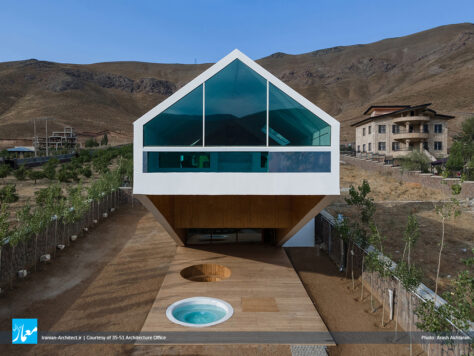
در شروع طراحی، با توجه به کشیدگی زمین در راستای شمالیـجنوبی (طول ۵۰ در عرض ۲۰ متر)، لکهگذاری ساختمان برای ایجاد احساس نزدیکی بیشتر با منظر شمالی، در همین راستا گسترش یافت. در ادامه نیز با ایجاد برشی مورب در طول ساختمان، علاوه بر آنکه دید به منظر شمالی، به عمق ساختمان رسید، سقفی بر روی سایت شکل گرفت که حضور فیزیکی انسان در زمان بارش برف و باران، یا استفاده از گرمای مطبوع میانه روز (در عین محفوظبودن از تابش مستقیم خورشید) را محدود به داخل ساختمان نکند و امکان این حضور تا عمق بیشتری از سایت فراهم شود.

در قسمت جنوبی حجم، به واسطه ایجاد یک محفظه شیشهای، و قراردادن دیوار سنگی ضخیم در پشت آن و بازشوهایی در بالا و پایین (راهکار معروف به دیوار ترومب)، میتوان انرژی حرارتی تابیدهشده در طول روز را ذخیره کرد و برای گرمکردن ساختمان در شب مورد استفاده قرار داد.
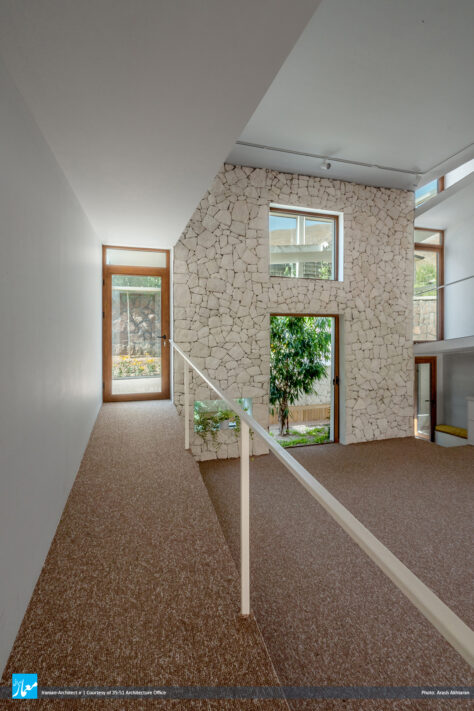
در مواجهه با شیب زمین، با پرهیز از صاف یا پلهایکردن سایت (برخورد معمول در مواجهه با زمینهای شیبدار)، مسیرهای دسترسی افقی و عمودی به صورت رمپ درآمدند تا با ایجاد حرکتی نرم و راحت در تمام پروژه، امکان رسیدن به احساس آزادی بیشتر تقویت شود.
Dasht-e-Chehel Villa
35-51 Architecture Office (Hamid Abbasloo, Abbas Yaghooti, Neda Adiban Rad)
Location: Mosha, Damavand, Iran
Date: 2021
Area: 440 sqm
Status: Completed
Client: Omid Torabi
Design Team: Mohammadreza Aghaie
Structure: Majid Koolivand
Construction: 35-51 Architecture Office (Hamzeh Jalambadani)
Construction Team: Ahmad Shahbazzadeh, Hossein Babapour, Ghoseddin Soltani, Abolghasem Ramezani, Meysam Molaei, Mohsen Davoodi, Aria Abdolahi, Hadi Salehi, Saeed Nikrooz
Photo: Arash Akhtaran
Dasht-e-Chehel villa is an experience to reach an external-internal life in a cold climate. It is about how to stay out of the building and experience snow and rain, but still remain in a safe zone; and how to be inside without losing sensory, visual and psychological connection with the outside; and also how to blur the boundary line between inside and outside, to reach a greater freedom.
At the beginning of the design, due to the extension of the ground in the north-south direction (with length of 50 and width of 20 meters), we decided to place the building in the same direction of ground, and closer to the north border, in order to benefit the beautiful view of the north. Then, by making a diagonal cut along the building, we brought the north view to the heart of the building, and in addition, an outdoor roof was created toward the yard that would allow the physical presence of humans during snow, rain and also let them use the midday heat (while being protected from direct sunlight). By the way, residents are not limited to the inside of the building, and they can use a larger part of the yard in cold seasons.
In the southern part of the building, by creating a glass chamber with a thick stone wall behind (Trombe wall) and some openings at its top and bottom, the thermal energy radiated during the day, can be stored and used to heat the building at night.
In the end, by avoiding flattening or stepping the site (common solution for the sloping lands), the horizontal and vertical access routes became ramps to provide more smooth and comfortable movements throughout the building, and enhance the feeling of freedom.

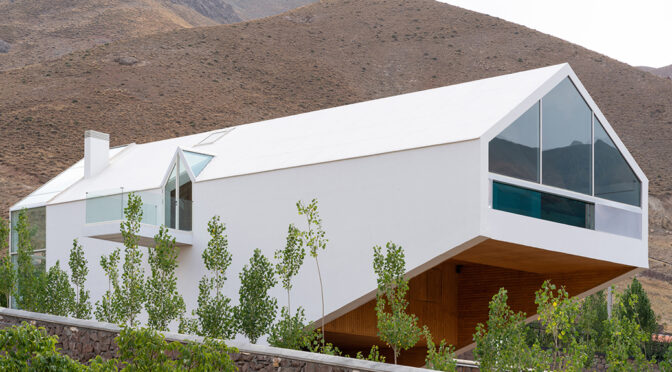
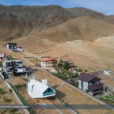
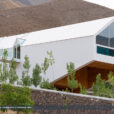
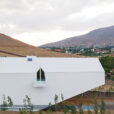
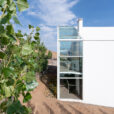
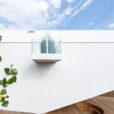
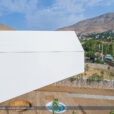
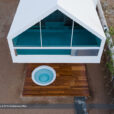
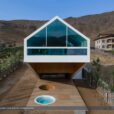
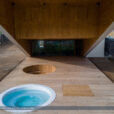
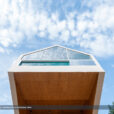
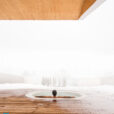

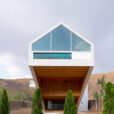
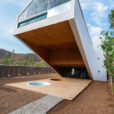
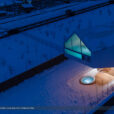
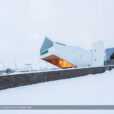
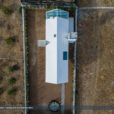
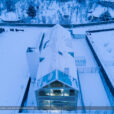
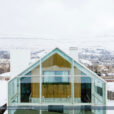
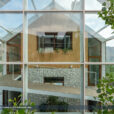

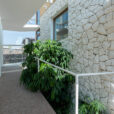
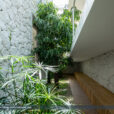
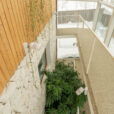
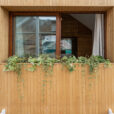
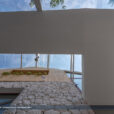
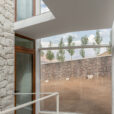
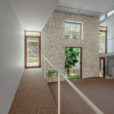
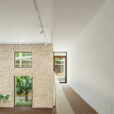
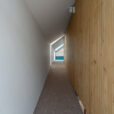
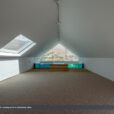
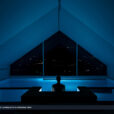
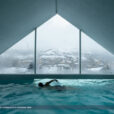
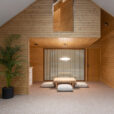
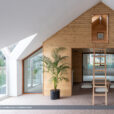
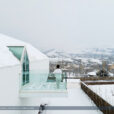
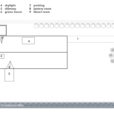
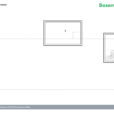
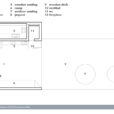
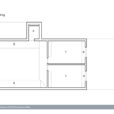
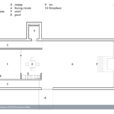
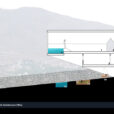
الهی که هیچ کوه خواری خیر نبینه
عجیب بودن یک طرح در معماری، اهداف متعددی را دنبال میکند:
از تلاش برای دستیابی به سلسلهمراتب فضایی متمایزتر نسبت به دیگر طرحها، تا ایجاد تجربهای نو از فضا که منجر به جذابیت بصری و ارتقای کیفیت ادراکی کاربر میشود. گاه نیز در پی افزایش حس امنیت و راحتی در تعامل انسان با عناصر اصلی فضاست.
اما در برخی موارد، این ویژگی بهجای آنکه در خدمت انسان و کیفیت زیستمحیطی باشد، صرفاً به ابزاری برای شهرت معمار تبدیل میشود؛ خطایی که حتی معماران بزرگ جهان نیز گاهی در دام آن میافتند:
زمانیکه معماری بهجای خدمت به عملکرد و ساختار، به خدمت “معمار” در میآید.
در این میان، باید پرسید:
در چنین پروژههایی، سهم آسایش انسان چیست؟
آیا فضا واقعاً در خدمت زندگی است یا صرفاً عرصهای برای نمایش خودنمایانهی فرمهای بیدلیل و اغراقشده؟
اینگونه آثار، بیشتر به یک اثر هنری فاخر شباهت دارند؛ طراحیهایی که گویی برای مخاطبی خاص و محدود خلق شدهاند. تجربهای شبیه به پوشیدن لباسی مدرن اما ناراحت؛ ظاهری خیرهکننده که روح انسان را نمینوازد.
این نوع طراحی را نمیتوان معماری نامید.
معماری، زمانی معنا مییابد که روح آن در فضا دمیده شود و کاربر بدون نیاز به درک پیچیده یا فرمهای عجیب، حضور آن را درک کند.
زیبایی اصیل در معماری، نیازمند تفاخر بیدلیل یا تفاوتسازی تصنعی نیست؛ بلکه از هماهنگی عملکرد، فرم، احساس و انسان زاده میشود.